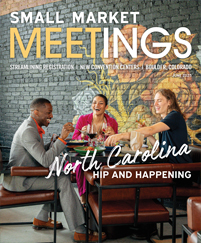After nearly two years of downs and occasional ups, many of us feel stretched thin, like rubber bands at the breaking point. It’s evident in our workday as responses to our emails or calls seem to crawl, some never coming at all. Who knows what has been thrown in our recipient’s path: another office shutdown, a sick spouse, a child back to home school because of quarantine or an aging parent trapped in a nursing home?
No doubt, the past 18 months have been demanding, depressing and often devastating. As we ease back toward normalcy in life and work, there’s value in finding ways to spread kindness and hope among those around us.
Embed empathy in email.
Remote work has meant more virtual and online interactions, and as we’ve juggled all the tech, the overload has left us like an outdated laptop, low on memory, short on battery power. Something simple like replying to an email can feel onerous, so keep that in mind as you send messages. Make it a habit to open your message with a caring phrase like “I hope you are doing well” or “I know you are busy juggling home life and work.” And if you send an email after hours, keep in mind suggestions from two organizational management experts that wrote a column recently in the Wall Street Journal. They found that even though most who send after-hours emails don’t expect immediate responses, their recipients often feel they must respond quickly. The experts suggested that senders include messaging along these lines in their email: “This isn’t urgent, so get to it whenever you can” or “Please know that I respect boundaries around personal time. If you receive an email from me during your personal time, please protect your time and wait to respond until you are working. It’s important that we all prioritize joy over email whenever possible.”
Pick up the phone for a change.
Are we overusing email and texting? Would a co-worker or supplier like to hear your voice, maybe even catch up on personal life for a few minutes before plunging into project talk? We’ve been limited in our in-person meetings for months and months, so a quick call would likely be refreshing, a chance to laugh, share an insight, have a meaningful conversation. It could be a time to check in on a peer or a supplier, find out what the past 18 months have been like for them and show you care. That’s what builds business relationships. Too, a phone call can sometimes be more expedient than an email. Daniel Post Senning, great-great-grandson of Emily Post, says that if an email is longer than three paragraphs, you should pick up the phone instead.
Try your hand at a thank-you note.
How many times have people thanked you for the thank-you card you sent them? It happens a lot, and it points to how cherished and meaningful this old-school form of gratitude has become. So if you want to lift someone else’s spirits and your own, buy stamps you like — most post offices have lots of options — and notecards that inspire you or reflect your personality and that are just right for a three- or four-sentence message. As emilypost.com says, “The handwritten thank-you note speaks volumes simply as a medium and sends the message that you care enough to invest yourself personally in acknowledging another. Does it take longer to address and stamp an envelope than to click ‘Send’? Yes, but by about one minute — a minute well spent to say thanks well.” And if you don’t feel confident in writing a note, Google “how-to write thank-you notes,” and you’ll find tons of tips.
Share uplifting stories.
Break free of the standard motivational speaker and, instead, draw upon local leaders, innovators and do-gooders, or even attendees, with inspiring stories to share. Stories are all around. Likely, the folks at the local convention bureau, who are connected to so many others in their community, know about them. Imagine hearing the story of Lasagna Love, launched by a California woman, which now has volunteers in 50 states baking lasagna for hungry people. Or how about the Kindness Yard Sale, a project started a few years ago by a woman in metro Washington, D.C.? The most recent sale at this “pay what you want” sale raised $11,000 to fund acts of kindness around the region.
Do something kind for others.
A lot of people are hurting, and helping others not only improves someone else’s life, it can make us feel better. The Mental Health Foundation — mentalhealth.org.uk — which has created a Kindness Matters guide, points out: “If we take the time to be kind to other people, we can reap the emotional dividends. It can really make a difference and especially for people who are vulnerable or struggling.” Adding an element of volunteer service to meetings and conferences has long been a tradition in meeting planning, so even if your event is abbreviated or hybrid, find creative ways to allow your attendees to get involved and help others. It could be a hula-hoop marathon to raise money for a local recreation center or an assembly line to package backpacks full of school supplies for schoolchildren. For a more active volunteer pursuit, dig into gardening chores at a local park or make repairs to an elderly person’s home. A service like VolunteerMatch or the area’s convention and visitors bureau service staff will have ideas.












